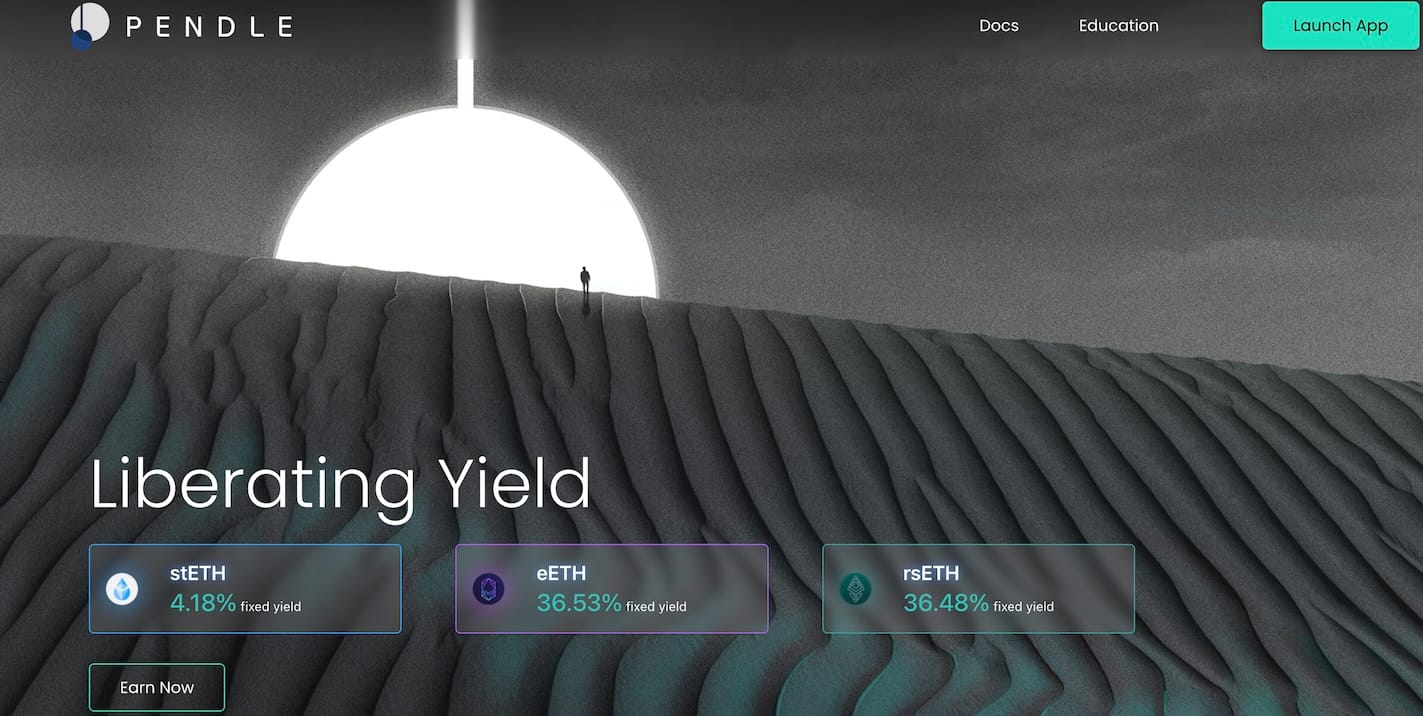Pendle Finance (2)
The "best" way to use Pendle Finance, or any DeFi platform, depends on your investment goals, risk tolerance, and understanding of the platform's unique features.

For Yield Farmers and Long-Term Holders
The "best" way to use Pendle Finance, or any DeFi platform, depends on your investment goals, risk tolerance, and understanding of the platform's unique features. Pendle Finance offers innovative mechanisms for yield management and trading, focusing on the separation of yield and principal components of yield-bearing assets. Here's a strategic approach to make the most out of Pendle Finance, tailored to different user profiles:
- Yield Tokenization: Utilize Pendle's ability to split yield-bearing assets into Yield Tokens (YT) and Principal Tokens (PT). This can be particularly useful if you're looking to:
- Lock in Yield: Sell YT if you anticipate a decrease in yield rates or wish to capitalize on current high yields.
- Maintain Principal: Hold onto PT if your focus is on the long-term appreciation of the underlying asset.
- Liquidity Provision: Providing liquidity to Pendle's AMM pools can be a source of additional income through trading fees and liquidity mining rewards. Consider this if:
- You're comfortable with the risks associated with being a Liquidity Provider (LP), including impermanent loss (although Pendle mitigates this at maturity).
- You want to earn PENDLE tokens or other incentives offered by the platform.
For Traders and Speculators
- Trading YT and PT: Given that YT and PT represent different components (future yield and principal, respectively), there are unique trading opportunities, especially if you have insights or predictions about the yield market's direction.
- Arbitrage Opportunities: Look for price discrepancies between Pendle and other markets. This could involve YT, PT, or the underlying yield-bearing assets.
- Leveraged Points and Yield Farming Strategies: If you're sophisticated in DeFi strategies, Pendle offers mechanisms to leverage points through YT holdings. This can amplify returns but also increases risks.
For Risk-Averse Users
- Staking PENDLE: If direct participation in yield tokenization or liquidity provision seems too risky or complex, consider staking PENDLE tokens (if such a mechanism is available and suits your risk profile). This can offer a simpler way to earn rewards.
- Holding PT to Maturity: Since PT represents the principal and its value is expected to converge to the underlying asset at maturity, holding PT can be a lower-risk strategy compared to active trading or liquidity provision.
General Best Practices
- Do Your Own Research (DYOR): Understand how Pendle works, including the risks involved with YT, PT, and liquidity provision. Review the documentation, audits, and any available analysis or reviews.
- Start Small: If you're new to Pendle or DeFi in general, consider starting with a smaller investment to familiarize yourself with the platform's mechanics and risks.
- Monitor the Market: Keep an eye on the broader DeFi yield market and Pendle's updates or governance proposals. Changes can affect your strategy and potential returns.
- Consider the Impact of Fees and Gas Costs: Transactions on Ethereum (or other supported blockchains) can be costly in terms of gas fees. Make sure these costs don't outweigh your potential gains.
Ultimately, the best strategy aligns with your financial goals, risk tolerance, and the level of engagement you wish to have with the DeFi ecosystem. Pendle Finance offers a range of opportunities, but each comes with its own set of risks and considerations.

